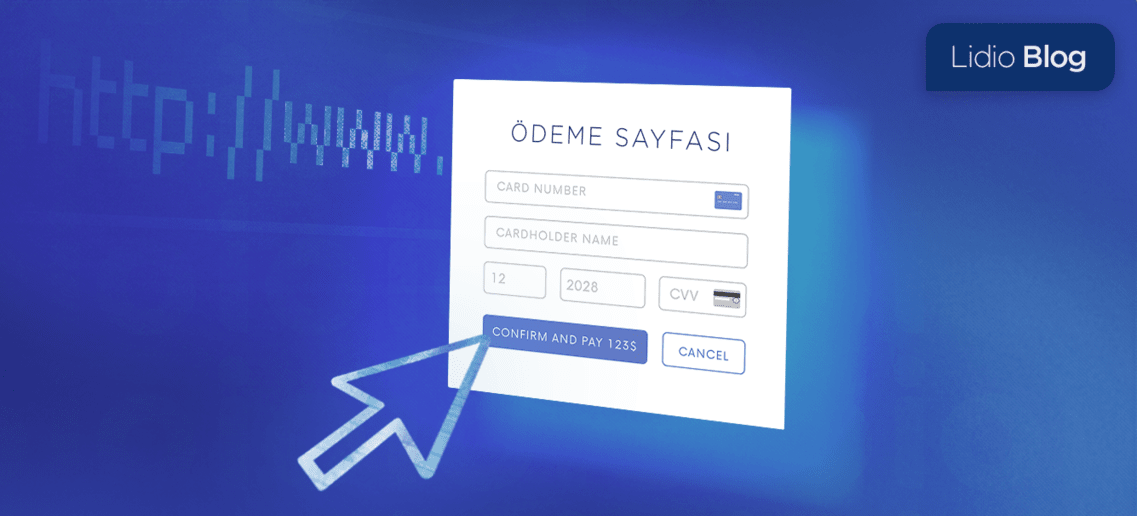
Tek Tıkla Ödeme Nedir E-Ticarette Dönüşüm Oranlarını Artırmanın Yeni Yolu
Tek Tıkla Ödeme Nedir E-Ticaret’te Dönüşüm Oranlarını Artırmanın Yeni Yollarını Keşfedin...
E-Tahsilat Nedir? E-Tahsilat Ne İçin Kullanılır? Öğrenmek için blog yazımızı zirayet edin!

E-tahsilat , günümüz iş dünyasında ödeme almaya yarayan bir araç haline gelmiştir. Bu sistem, şirketlerin ve iş yerlerinin müşterilerinden veya iş ortaklarından alacaklarını debit ya da kredi kartları aracılığı ile online olarak tahsil etmelerini sağlar. Geleneksel tahsilat yöntemlerine kıyasla daha hızlı ve verimli olan e-tahsilat, özellikle küçük ve orta ölçekli aynı zamanda bayi ağı ile çalışan işletmeler için zaman ve maliyet tasarrufu anlamına gelir. Bu sistem, faturaların elektronik olarak düzenlenmesi ve ödenmesi, online siparişlerin tahsilatı ve hatta abonelik bazlı hizmetlerin düzenli ödemelerini içerebilir.
E-tahsilat kullanım alanları oldukça çeşitlidir. İşletmeler, bu sistemi müşterilerinden alacaklarını tahsil etmek, abonelik ve üyelik ücretlerini toplamak, bayilerinden kartlı online tahsilat gerçekleştirmek hatta bağış ve yardım toplamak için kullanabilir. E-tahsilatın kullanıldığı başlıca alanlar arasında fatura ödemeleri, eğitim sektöründeki öğrenim ücretleri, sağlık hizmetleri, online perakende ve e-ticaret sayılabilir. Bu sistem, işletmelerin nakit akışını düzenlemelerine ve tahsilat süreçlerini otomatize etmelerine olanak tanır, böylece daha verimli ve güvenli bir finansal yönetim sağlanır.
E-tahsilat yapılabilmesi için işletmelerin öncelikle bir online tahsilat sağlayıcısı ile sözleşme yapması gerekmektedir. Bu sağlayıcılar, genellikle bankalar veya finansal teknoloji şirketleri olabilir. İşletmeler, bu sistemler üzerinden müşterilerine çeşitli ödeme seçenekleri sunar: kredi kartı, banka havalesi, e-cüzdan, tekrarlayan ödeme, tek tıkla ödeme seçenekleri vb. Müşteriler, bu yöntemlerle online olarak ödemelerini gerçekleştirirler ve işletmeler de bu ödemeleri gerçek zamanlı olarak takip edebilir. E-tahsilat sistemleri, genellikle kullanıcı dostu arayüzler ve çeşitli entegrasyon seçenekleri sunar, bu da işletmelerin mevcut muhasebe ve CRM sistemleriyle kolaylıkla entegre olmasını sağlar.
E-tahsilatın sunduğu avantajlar şunlardır:
E-tahsilatın dezavantajlarına gelince, teknik sorunlar ve güvenlik endişeleri başlıca konulardır. Ancak, güçlü güvenlik protokolleri ve düzenli sistem bakımı ile bu riskler minimize edilebilir.
E-tahsilat, neredeyse her sektörde kullanılabilir. Perakende, eğitim, sağlık, turizm, hizmet sektörleri ve daha birçok alanda, e-tahsilat yöntemi, işletmelerin tahsilat süreçlerini kolaylaştırır ve müşteri deneyimini iyileştirir.
E-tahsilat sistemlerinin güvenliği, kullanılan platformun güvenlik standartlarına ve uygulanan şifreleme tekniklerine bağlıdır. Güvenilir sağlayıcılar, sürekli olarak veri koruma ve güvenlik protokollerini günceller ve geliştirir.

Tek Tıkla Ödeme Nedir E-Ticaret’te Dönüşüm Oranlarını Artırmanın Yeni Yollarını Keşfedin...

CVV Kodu Nedir? Neden önemlidir? Öğrenmek için blog yazımızı zirayet edin!...

Provizyon Nedir? Provizyon Ne İçin Kullanılır? Öğrenmek için blog yazımızı ziyaret edin!...

QR Kod Nedir? QR Kod Ne İçin Kullanılır? Öğrenmek için blog yazımızı zirayet edin!...

Linkle ödeme nedir, linkle ödeme sistemi nasıl çalışır, avantajları nelerdir, ve linkle ödeme nasıl alınır merak ediyorsanız detaylı bilgi için blog yazımızı okuyun!...

Ödeme sistemleri, online mağazalarınızda müşterilerinizden ödeme almak için kullanılan finansal teknolojilerin tümüne verilen addır. Detaylı bilgi için web sitemizi ziyaret edin!...

Ödeme sayfası nedir, sayfa güvenliği nasıl anlaşılır, ödeme sürecinin güvenli olduğundan emin olma yolları nelerdir hakkında detaylı bilgi için blog yazımızı okuyun. ...

Startup Nedir? Startup nasıl kurulur öğrenmek için blog yazımızı zirayet edin!...

Check Out Nedir? Neden önemlidir öğrenmek için blog yazımızı zirayet edin!...

Dijital Cüzdan Nedir? ? Neden önemlidir öğrenmek için blog yazımızı zirayet edin!...

E-Tahsilat Nedir? E-Tahsilat Ne İçin Kullanılır? Öğrenmek için blog yazımızı zirayet edin!...

İnternet alışverişinde tüketicilerin hakları nelerdir, kabul edilen sözleşmeler neyi ifade eder detayları ile öğrenmek için blog yazımıza göz atın!...

Sanal POS hakkında tüm bilmeniz gerekenler: Öğrenmek için blog yazımıza göz atın!...

Sepeti terk etme oranları işletmeler için neden önemlidir, nasıl minimize edilir öğrenmek için blog yazımıza göz atın!...

Geleneksel ödemelerden açık bankacılığa finansal serbestleşme nedir ve neden önemlidir öğrenmek için blog yazımıza göz atın!...

Uluslararası ödemeler nasıl gerçekleştirilir, hangi yöntemler kullanılır öğrenmek için blog yazımıza göz atın!...

Ödeme alma sürecinde tahsilatları tek ekrandan yönetmek işletmelere ne gibi avantajlar sağlar öğrenmek için blog yazımıza göz atın!...

ERP nedir, POS ve hesap hareket takibi nasıl yapılır öğrenmek için blog yazımıza göz atın!...

Issuer, Acquirer ve PSP kavramları nelerdir, PSP seçimi neden önemlidir öğrenmek için blog yazımıza göz atın!...

İnternetten yapılan alışverişlerde dolandırıcılığa karşı kullanılan güvenlik önlemleri nelerdir öğrenmek için blog yazımıza göz atın!...

E-ticarette online satış yapmanın püf noktaları nelerdir, tüketici deneyimi nasıl iyileştirilir öğrenmek için blog yazımıza göz atın!...

Açık bankacılık nedir, işletmelere nasıl avantajlar sağlar öğrenmek için blog yazımıza göz atın!...

Güvenli online alışverişin şifresi: 3D Secure Ödeme nedir, ne işe yarar öğrenmek için blog yazımıza göz atın!...

Kredi kartı, kapıda ödeme, havale/kredi, mobil ödeme gibi alternatif ödeme yöntemleri nelerdir, nasıl kullanılır öğrenmek için blog yazımıza göz atın!...